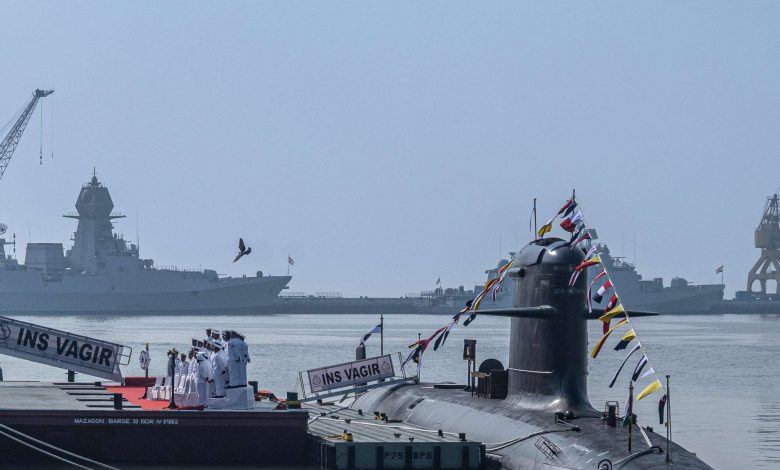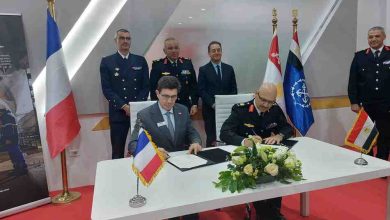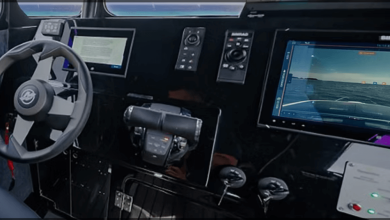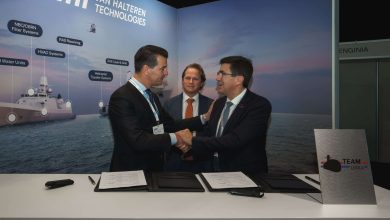
Unveiling INS Vagir: India’s Homegrown Marvel in the Kalvari-Class Submarine Fleet
INS Vagir, the fifth P75 Kalvari-class submarine, was officially inducted into the Indian Navy in the presence of the Chief of Naval Staff, Admiral R Hari Kumar, PVSM, AVSM, VSM, ADC, along with numerous other senior officials. The occasion was also graced by Naval Group’s Executive Vice President for Submarines, Mr. Laurent Espinasse, accompanied by the Naval Group team based in India.
INS Vagir is constructed by the Indian shipyard Mazagon Dock Shipbuilders Limited (MDL) utilizing the Naval Group Scorpene® blueprint.
Unveiled on 12 November 2020, INS Vagir has successfully completed all her maritime trials and now officially enters service within the Indian Navy. She will join her predecessors INS Kalvari, INS Khanderi, INS Karanj, and INS Vela, which were commissioned in December 2017, September 2019, March 2021, and November 2021 respectively. The final submarine of the P75 series, Vagsheer, is presently undergoing sea trials with a delivery scheduled for 2024.
Laurent Espinasse, EVP Submarines, remarked: “The induction of INS Vagir marks a significant achievement for the Indian Navy, MDL, Naval Group, and all our industrial collaborators. We take pride in being part of the P75 initiative and are unwaveringly dedicated to delivering the final unit of this series while furthering the level of indigenisation in future Indian Navy projects.”
The commissioning of INS Vagir underscores the triumph of the indigenous submarine construction programme initiated by the Government of India. This submarine was entirely crafted by MDL, which has successfully assimilated the technology transfer from Naval Group, in alignment with the Indian Government’s “Make in India” initiative. The series of six submarines under the P75 programme is equipped with various components manufactured in India by skilled and well-trained Micro, Small & Medium Enterprises (MSMEs). MDL and Naval Group have fostered an extensive industrial ecosystem comprising over 50 Indian firms, alongside an Indian branch with more than 70 engineers to assist the Indian Navy, thus contributing to industrial and technological autonomy. Such collaboration enables Naval Group’s industrial associates to access new markets by showcasing the expertise and experience gained from the program. Naval Group hence plays a pivotal role in nurturing a robust Indian naval industrial ecosystem.
The Scorpene®, a contemporary, high-performance, and stealthy submarine
The Scorpene® is a 2000 tons conventional propulsion submarine conceptualized and crafted by Naval Group for various missions, including surface vessel military operations, anti-submarine warfare, long-range assaults, special operations, and intelligence collection. Remarkably stealthy and swift, it features a high level of automation that allows for a reduced crew size, significantly lowering operational expenses. Its combat superiority is emphasized by its six weapon launch tubes and capability to carry 18 munitions (torpedoes, missiles).
With 14 submarines selected globally, the Scorpene® stands as a vital benchmark for conventional attack submarines (SSK) for navies worldwide. The product can be effortlessly tailored to the specific needs of any naval clients. Continuous enhancements by Naval Group’s dedicated and experienced designers ensure the smooth incorporation of advancements and modern technologies.
Naval Group, a longstanding ally of India
Naval Group maintains a presence in India through its wholly-owned subsidiary Naval Group India. Founded in September 2008, Naval Group India’s mission is to facilitate the indigenisation of equipment for the Scorpene® submarine, develop the Indian defense ecosystem, and provide design services in India utilizing skilled Indian engineers.
Naval Group India is committed to realizing the vision of AatmaNirbhar Bharat and evolving into a center of excellence for the support and maintenance of P75 submarines by further empowering Indian industries and establishing a robust ecosystem to meet the diverse defense requirements of the nation.







